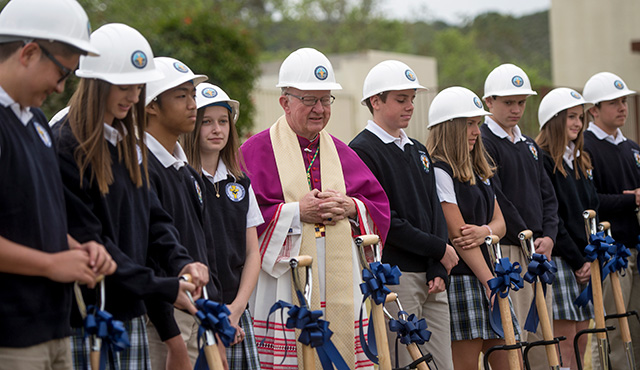Those of us who attended Catholic elementary and high schools recall the mixed emotions we had about our school uniforms – the same feelings echoed today by our children and grandchildren.
On one hand, uniforms made life simpler. No worrying about what we would wear each day. No fuss, no muss. On the other hand, we grew to hate our uniforms. So boring, wearing the same thing every day when we wanted to be fashionable and individualistic.
Catholic uniform history
The American Catholic school system developed primarily as a response to violent anti-Catholic sentiments in the 1830s and a desire to reinforce Catholic teaching in a religiously diverse country, writes Debbie Schaefer-Jacobs in a March 2016 article for the Smithsonian’s National Museum of American History.
Uniforms provided a method of masking obvious class and racial diversity in dress, while providing a sense of security, modesty and freedom of movement, particularly for females, Schaefer-Jacobs notes. By the late 19th and early 20th centuries, she adds, boys were often wearing military-style clothing, while girls were wearing simple dresses.
Pros and cons of school uniforms
According to greatschools.org, proponents of school informs say they:
- Help prevent gangs from forming on campus
- Encourage discipline
- Help students resist peer pressure to buy trendy clothes
- Help identify intruders into the school
- Diminish economic and social barriers between students
- Increase a sense of belonging and school pride
- Improve attendance
Opponents contend that school uniforms:
- Violate a student’s right to freedom of expression
- Are simply a Band-Aid on the issue of school violence
- Make students a target for bullies from other schools
- Create a financial burden for parents
- Are an unfair, additional expense for parents
A level playing field
Because Catholic schools educate students who come from diverse socioeconomic levels and much different neighborhoods, uniforms are an important means of equaling the playing field, explains Assistant Superintendent Sally Todd of the Diocese of Orange.
“It has been shown that professional dress, including uniforms, create a more productive and positive learning environment,” Todd says. “Among other things, Catholic school uniforms are designed to promote the learning of our students.”
The dress code at St. Hedwig School in Los Alamitos includes rules regarding hairstyles as well as uniform requirements, says Principal Erin Rucker. So-called ‘trendy’ hairstyles, such as those with shaved sides and backs and longer locks on top, are banned.
“We have uniforms and a dress code for many reasons,” Rucker says. “One of the main ones is that the focus becomes on the academics and spiritual growth of our students rather than who is wearing the cutest clothes.”
Exceptions to the rule
Catholic schoolchildren complain about uniforms, “but kids complain about everything,” Todd says with a laugh. “They don’t like them, but when parents and alumni look back on their educational careers they laugh about their uniforms and appreciate them.”
As a refreshing break, St. Hedwig students look forward to wearing their ‘regular’ clothes on spirit days and non-uniform days, Rucker says. Still, on those days teachers report that students struggle more to focus in the classroom.
Inevitably students complain about similar things that their parents and grandparents griped about – boys must wear belts and girls must tuck in their shirts – yet teachers and administrators believe that uniforms encourage friendships and communications skills, Rucker notes.
“We want the focus to be on who we are as people and not on what we’re wearing,” she adds. “We emphasize a strong academic foundation with kindness and compassion for others.”

